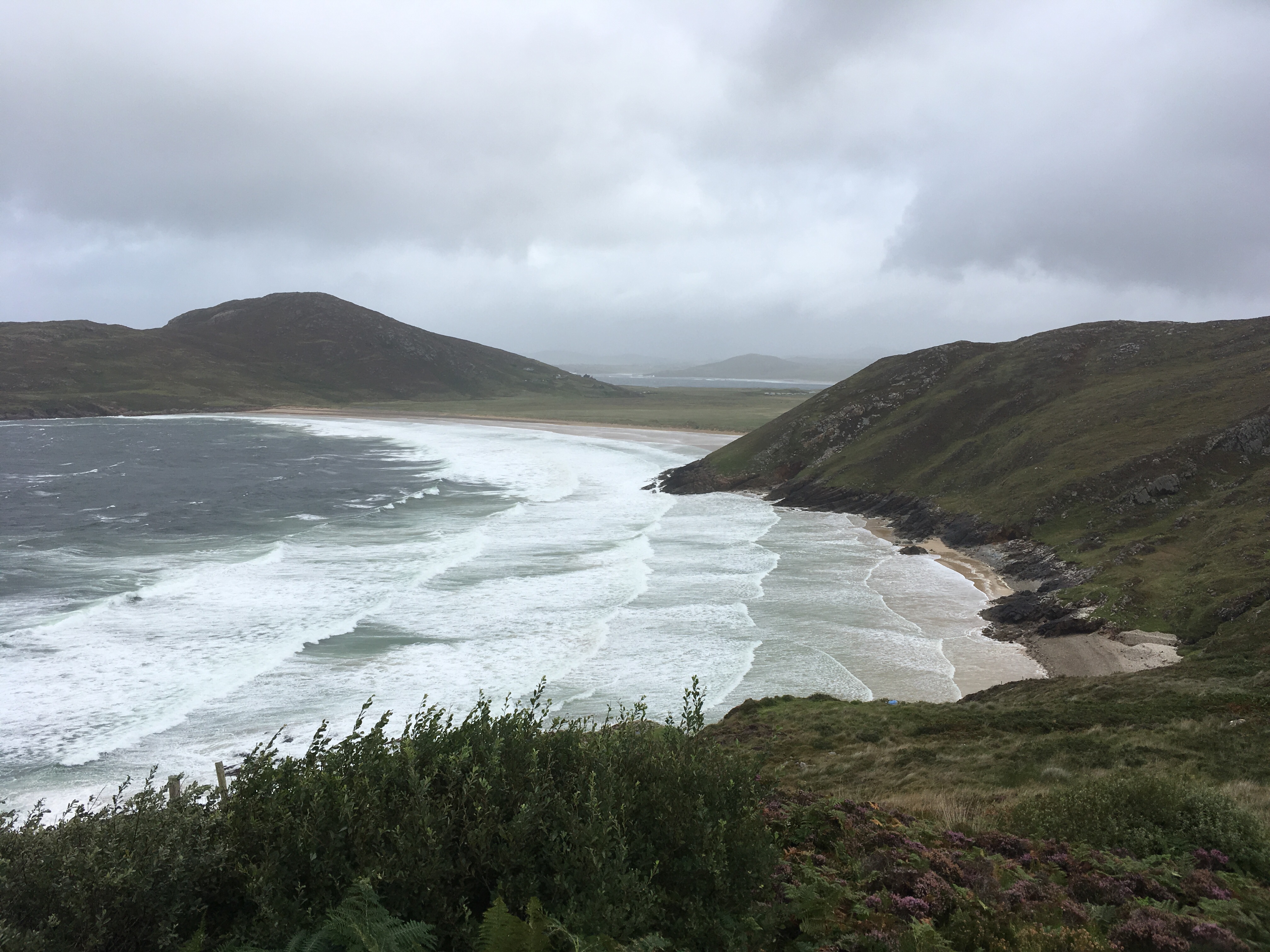The Atlantic Drive in North Donegal is a well-known driving route on the Wild Atlantic Way, snaking along the coast from Downings towards Carrigart. The beautiful Trá na Rossan Bay is one of the most recognizable and photographed places in the county, and even locals never tire of the ever changing view. There is however a real treasure trove of fantastic scenery and history a little bit further on, just off this road to the left.

The big beach is accessible via a left turn further along the R248 as just at the bottom of the hill on the left there is access to Trá na Rossan. A great walking beach in the often bracing Atlantic air!

Further along the road, on the left and tucked under the hill stands the Trá na Rossan An Óige Youth Hostel, with a very unique claim to fame. Designed by the renowned English architect Sir Edwin Lutyens, (1869 –1944) who designed many English country houses, war memorials and public buildings, it was commissioned by the Hon and Mrs Robert Phillimore of London as a holiday home in the 1890s and remained in use until the 1930s. Lutyens, whose mother was Irish, is best known for designing the Cenotaph in London, the WW1 Islandbridge National War Memorial in Dublin, many buildings in New Delhi and many others.

Beyond the Youth Hostel there are spectacular views of the Atlantic Ocean as it breaks on the the shores of the Rosguill Peninsula and the Fanad Peninsula opposite. The road ends at the entrance to a caravan park near the end of the peninsula.
A short walk of 10 to 15 minutes across a field to the left leads to the spectacular Boyeeghter Bay, location of the beach known as the Murder Hole. No signs, no path. While dangerous in severe weather conditions, it is a magnificent spot with views of Horn Head and Tory Island.

There is a bit of a slope down to the strand that obviously has to be climbed up again on the way out, but it is well worth the effort.

The efforts will be rewarded with spectacular views of this special place.

The more adventurous may like to walk up to the World War 2 Look Out Post and to the EIRE sign, placed to warn WW2 Pilots that they were approaching neutral Ireland, but they were also useful navigational aids.

The walk back to the road is very nice too, with Melmore Lough tucked under the hill. The entire area is designated a Special Area of Conservation for the protection of flora and fauna and as such, must be treated with respect, and also when crossing a private working farm to access the beach, take care to close gates etc.

Back at the Caravan Park is Melmore Beach. This beach struck terror into us as children as it was absolutely forbidden to go near the water’s edge because of dangerous currents. That said, we often enjoyed Sunday picnics here under strict supervision. It was a matter of awe to us that if you listened carefully you could hear stones and rocks rolling about under the water. In the distance is Melmore Point, the most northerly point on the peninsula and accessible only on foot. I walked out to it many years ago, up past the ruins of a Napoleonic Signal Tower towards the spectacular views of the surrounding coast.




Retrurning to the main road again, there are beautiful sandy beaches to your left along the entrance to Mulroy Bay. The Narrows is the name given to the narrow inlet into Mulroy Bay.
Past the Youth Hostel and to the left is The Mass Rock. This cross was erected about 1910 by Mrs Phillimore of the nearby residence, so that the people of the area could pray here instead of having to undertake the two hour walk to the Catholic Church in Umlagh. Canon Gavigan, the parish priest of the time refused to bless it and very sadly, it was never used for the purpose for which it was intended. It now stands as a monument to the hardship these people had to endure.

Returning to the R258 and turning left, there are fabulous views of Melmore and Mulroy Bay, allowing you to see where you have been! A fabulous look into your rear view mirror!
Note – *A ‘dander’ is a local word meaning a stroll or leisurely walk.
References
Mevagh Down The Years by Leslie W Lucas. Volturna Press 1972.

 Hallowe’en: A witch riding a broomstick with a black cat. C 1908 Missouri History Museum (Image Wikimedia Commons).
Hallowe’en: A witch riding a broomstick with a black cat. C 1908 Missouri History Museum (Image Wikimedia Commons).

 Peanuts – an annual treat for Halloweve. (Image Wikimedia Commons) Every house had a nail driven into the door frame of which to hang an apple (I still have this nail on my kitchen door from my own children).
Peanuts – an annual treat for Halloweve. (Image Wikimedia Commons) Every house had a nail driven into the door frame of which to hang an apple (I still have this nail on my kitchen door from my own children). Apples – the key ingredient of our evening (Image Wikimedia Commons)
Apples – the key ingredient of our evening (Image Wikimedia Commons) Hazelnuts from the hedgerows. (Image Wikimedia Commons)
Hazelnuts from the hedgerows. (Image Wikimedia Commons)



























